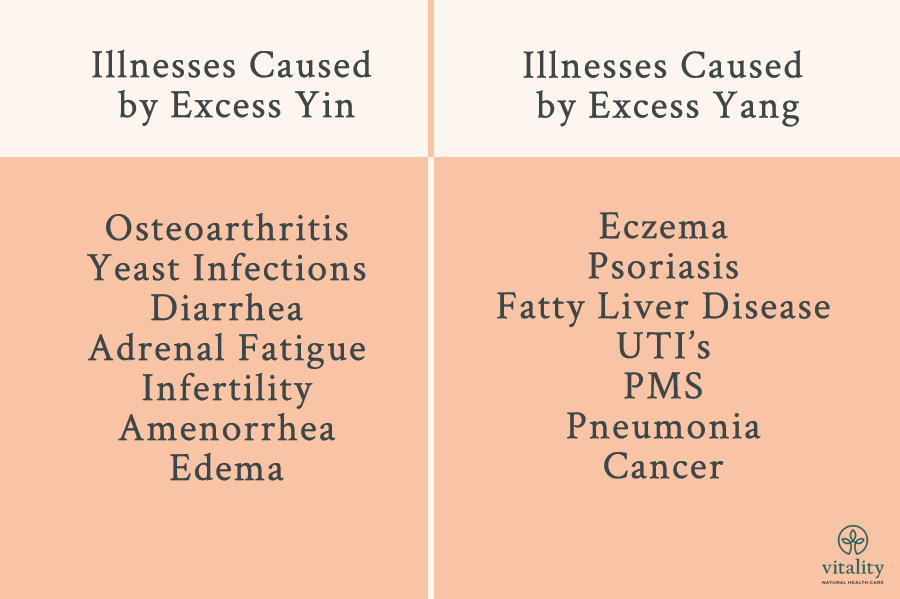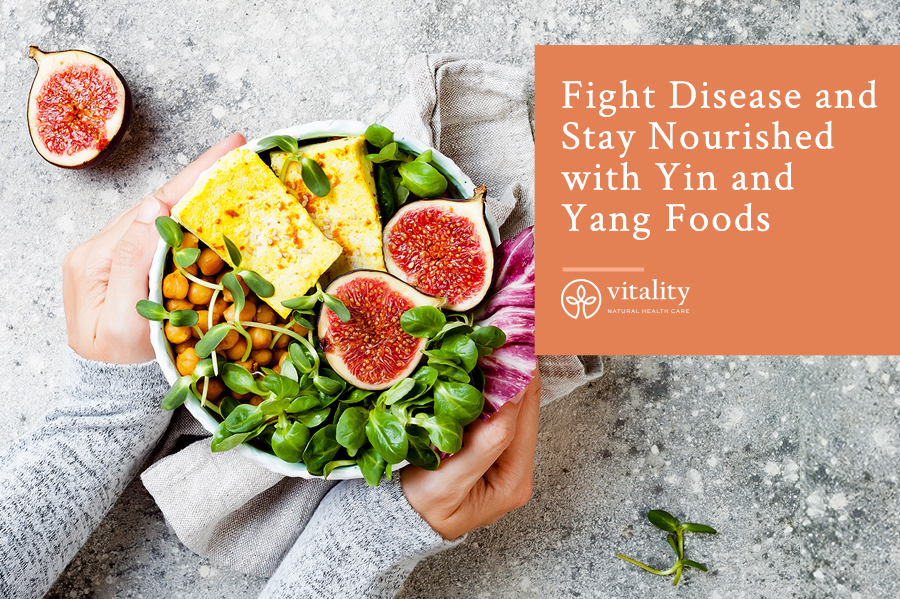We’re discussing the topic of nutrition on the blog all month – last week I shared my thoughts on the ideal diet and the week before I talked about the detrimental effects of dieting.
This week I want to add another piece to the puzzle and talk about yin and yang foods because as you know from reading the previous blogs in this series, the ideal diet is one that nourishes you and supports the needs of your unique body. Sometimes, those needs include actively using food to combat illness and disease and this is something that can be done through understanding and incorporating yin and yang foods into your diet appropriately.
You may have heard the terms yin and yang before, but I want to take a second to explain what they mean so we’re all on the same page.
In Chinese medicine, it is believed that food has energy, as does your body. Yin foods are cool and moist, while yang foods are warm and drying. Eating too much from one category or the other can upset your internal balance, leading to illness.
You can also shift the balance of yin and yang in your body through the activities you participate in and the environment in which you live.
For example, sitting at a desk all day is a yin activity; taking CrossFit or another exercise class provides you with yang energy. Also, living in a hotter climate like Arizona is yang while cold, snowy winters in New York City are very yin.
Yin Foods
- Tofu and soybeans
- Fruit, such as watermelon, bananas, strawberries, and citrus
- Vegetables, like watercress, cucumbers, carrots, cabbage, zucchini, and bok choy
- Cold beverages and water
Yang Foods
- Foods that are high in fat, protein, calories, and sodium
- Animal proteins, like chicken, pork, and beef
- Warm spices, such as cinnamon, nutmeg, ginger, and turmeric
- Eggs, nuts, avocado, raw onion, and mushrooms
- Alcohol and chocolate
In using yin and yang foods to treat illness, it is important to know which illnesses are yin and which are yang. The following chart provides some examples (1, 2):

For example, if a patient comes to my clinic with a cold, clear mucus, and feeling weak or fatigued, the dietary recommendation would be for them to incorporate more yang foods, like animal protein, nuts and seeds, avocado, and red onion.
Conversely, if they came in with green mucus and a fever, I would recommend more yin foods to help cool their body down and restore balance. I would have them incorporate foods like bananas, watermelon, zucchini, or citrus into their diet.
Similarly, if a patient came into the clinic with premenstrual syndrome (PMS) symptoms – migraines, mood swings, breast sensitivity, and cramps – I would recommend they incorporate more yin foods into their diet since PMS is an indication of excess yang energy. Eating foods like watercress, cucumber, kiwi, and mandarins could help provide relief.
You don’t have to be ill to use these principles of yin and yang foods, however.
If you are not ill, but simply looking to maintain a balanced body and optimize your health, you can use these principles to help to maintain balance in your body and support overall wellness.
To do this, you’ll want to eat yin and yang foods in a balanced manner. If I were having yin foods, like bok choy or cucumber, I might enjoy them with avocado so that within my meal, the energies of yin and yang are as balanced as possible.
Again, the ideal diet is one that supports your body’s ability to fight disease and that supports your health goals. But incorporating the information I shared in my last post along those mentioned here will help you to restore or maintain internal balance. It will also help you to recover more quickly when you do become ill.
Hippocrates was on to something when he said: “Let food be thy medicine and medicine be thy food.” The principles of yin and yang foods are exactly this – a way to use food to prevent and treat illness.
In my next and final blog of this series on nutrition, I’ll be diving into recovery and prevention even more as I share my favorite superfoods. Once this series is complete, you’ll have a well-rounded, practical, and comprehensive understanding of how to choose the best foods for your body.
I hope you’ll come back to read the final post in this series!
xo,


